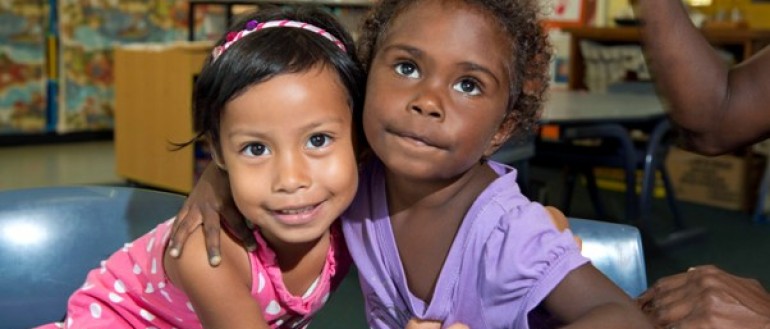Aims:
- To define the contribution of viral infection and increased bacterial load in the nose to episodes of acute lower respiratory infection (ALRI) in Indigenous children
- To explore the incidence of respiratory Human Papillomavirus (HPV) in infants and determine its relationship to ALRI
- To develop a sensitive and specific diagnostic for a major respiratory pathogen tested in the primary aim above, nontypeable Haemophilus influenzae (NTHi)
- To apply these methods to specimens assocaited with otitis media
Summary:
Lung infections such as pneumonia are common in Indigenous children, and can lead to repeated hospitalisation and permanent lung damage. They are also an important cause of preventable death in children. This study will look at the role of bacteria and viruses in lung infections, and will inform interventions to reduce the burden and consequences of lung infections in Indigenous children.
Implications for policy and practice:
Our research will help to determine the contribution that viruses and bacterial load make to respiratory disease.
Our research has found:
- Nasopharyngeal swabs relating to ALRI presentations and controls were analysed for clinically important respiratory bacteria and viruses. In case-crossover analysis, human adenovirus (predominantly type C) in the nasopharynx was statistically significantly associated with ALRI in these children. Additional analyses using parameterised complexity models are underway to inform additional strategies to reduce ALRI in this population (2 publications in preparation).
- Nasopharyngeal swabs from children less than 6 months of age (including 24 hospitalised with ALRI) were tested for HPV by PCR; all NPS were negative, thus there is no indication for change of HPV vaccination strategy to reduce incidence of ALRI in this population (1 publication in preparation).
- Initially we developed a rapid HRM targeting hpd, the accepted diagnostic for NTHi. However, we discovered that the hpd target (that also encodes Protein D, the vaccine antigen in the GSK 10-valent pneumococcal vaccine) was absent from many NTHi strains, and lacked ability to discriminate between NTHi and Haemophilus haemolyticus (Hh). We then used whole genome sequencing of 246 isolates to develop a new diagnostic target for H. influenzae. There has been excellent uptake of this method to date.
- NTHi was the dominant organism in ear discharge. Thus we have identified important respiratory microbes that need to be targeted to reduce ear and respiratory disease in Indigenous children.
Chief investigator:
Project manager:
Contact information:
Project dates:
This project will conclude in 2017.
Funders:
- National Health and Medical Research Council (NHMRC)
Collaborators:
- Heidi Smith‐Vaughan, Menzies School of Health Research
- Allen Cheng, Monash University and The Alfred Hospital
- Anne Chang, Menzies School of Health Research and Queensland Children’s Medical Research Institute
- Ian Mackay, Queensland Children’s Medical Research Institute
- Paul Torzillo, University of Sydney
-
Danielle Wurzel, Queensland Health.
-
Pickering, J., Smith-Vaughan, H., Beissbarth, J., Bowman, J.M., Wiertsema, S., Riley, T.V., et al. (2014). Diversity of nontypeable Haemophilus influenzae colonizing Australian Aboriginal and non-Aboriginal children. Journal of Clinical Microbiology, 52(5), 1352-1357.
-
Smith-Vaughan, H.C., Chang, A.B., Sarovich, D.S., Marsh, R.L., Grimwood, K., Leach, A.J., et al. (2014). Absence of an important vaccine and diagnostic target in carriage- and disease-related nontypeable Haemophilus influenzae. Clinical and Vaccine Immunology, 21(2), 250-252.
-
Smith-Vaughan, H.C., Binks, M.J., Marsh, R.L., Kaestli, M., Ward, L., Hare, K.M., et al. (2013). Dominance of Haemophilus influenzae in ear discharge from Indigenous Australian children with acute otitis media with tympanic membrane perforation. BMC.Ear Nose and Throat Disorders., 13, 12-13.
-
Price, E.P., Sarovich, D.S., Nosworthy, E., Beissbarth, J., Marsh, R.L., Pickering, J., et al. Haemophilus influenzae: using comparative genomics to accurately identify a highly recombinogenic human pathogen. BMC Genomics.

